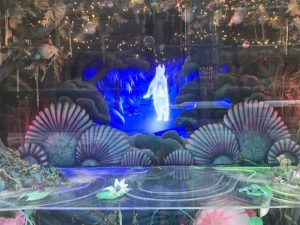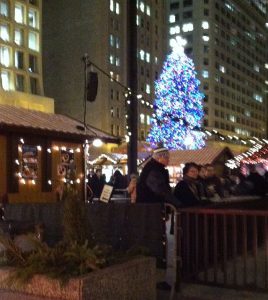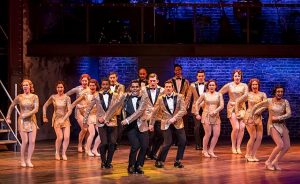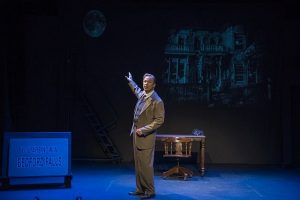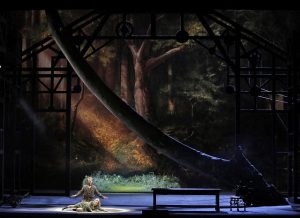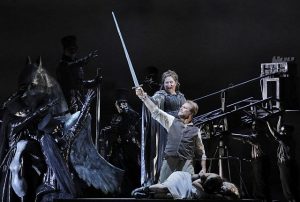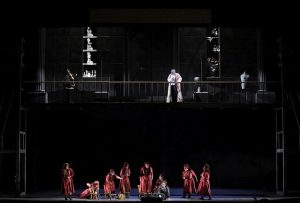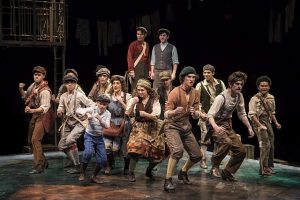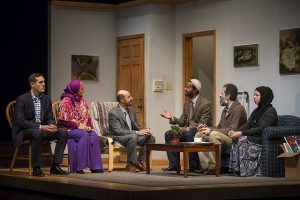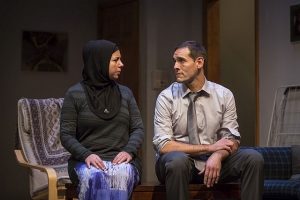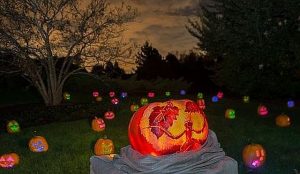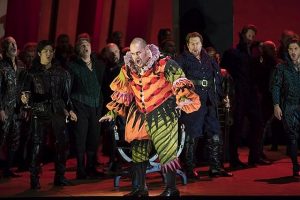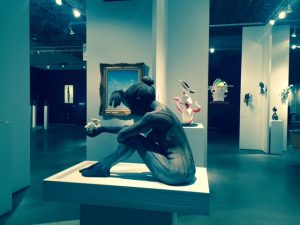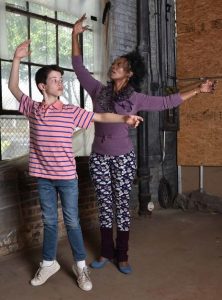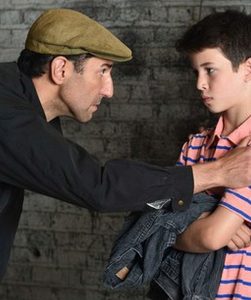RECOMMENDED
Many themes in the arts have universal relevance. ‘The Consul,’ currently in production by the Chicago Opera Theater, is a great example.
People from villages, cities, and countries all over the world can identify with this modern opera composed by Gian Carlo Menotti. Based on immigrants and political refugees, the opera takes place in an anonymous totalitarian country.
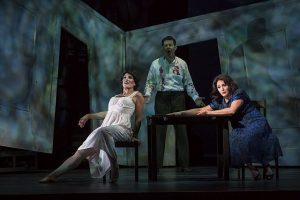
‘The Consul’ debuted in 1950 and went on to win the New York Drama Critic Circle’s award as the Best Musical Play. Menotti also garnered a Pulitzer Prize. ‘The Consul’ was described by The New York Times as “an opera of eloquence . . . written from the heart.” Andreas Mitisek, the director, reflected on his own experiences as an immigrant which drew him to this opera.
Award-winning Metropolitan Opera Soprano Patricia Racette plays Magda Sorel, the wife of John, played by Justin Ryan, a dissident who escapes from the police, hurries home and explains to his wife that she must apply for a visa in order to leave the country. John tells Magda to take their frail infant and his mother to the consulate and while they are awaiting their visas, he will hide at the border’s edge and join them once they’ve safely crossed over.
At the consul’s office, Magda fills out the paperwork and submits her application to the clerk and then joins the large group of refugees. The secretary gains everyone’s attention and announces that she cannot guarantee that anyone will receive their visas.
While Magda’s child’s health is failing, she is approached by the police who want information about John, but she refuses to answer any of their questions.
The brilliant voices and beautiful music conducted by Kristof van Grysperre are what increases the emotional depth of this exceptional story. After both her child and mother-in-law pass away, Magda cannot bear to imagine any additional losses, as she descends into a morose state of depression.
‘The Consul’ remains relevant today, as Magda sings “Give us back the earth and make us free.” Unfortunately, our world’s refugees do not have the libretto, arias, scenic design and beauty that this opera provides its audience.
In addition to Patricia Racette and Justin Ryan, the rest of the marvelous performers are Audrey Babcock, Victoria Livengood, Cedric Berry, Kyle Knapp, Vince Wallace, Kimberly E. Jones, Kira Dills-DeSurra, Zacharias Niedzwiecki, and Lani Stait.
DETAILS: ‘The Consul’is at the Studebaker Theater, 410 S. Michigan Ave. through Nov. 12, 2017. For tickets and more information, call (312) 704-8414 or visit Chicago Opera Theater.
Francine Pappadis Friedman
For more shows visit TheatreinChicago.

